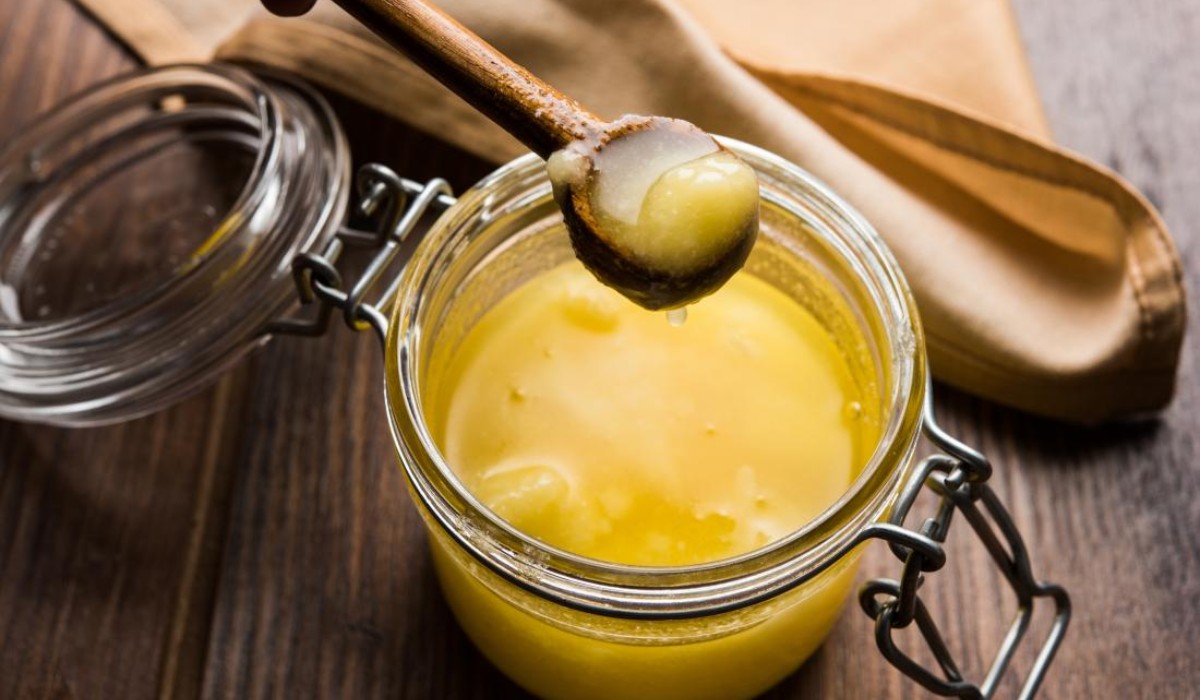Ghee, also known as clarified butter, is a staple in many kitchens, particularly in Indian households, known for its rich flavor and numerous health benefits. However, with the rise in adulteration of food products, it’s essential to know whether the ghee you’re using is pure or mixed with impurities. Here are some easy ways to check the purity of ghee at home:
1. The Palm Test
This is one of the easiest methods to check for purity.
- How to do it: Take a small amount of ghee and place it on your palm.
- What to look for: Pure ghee will melt within a few seconds due to body heat, whereas adulterated ghee may remain solid or take longer to melt.
2. The Smell Test
Ghee has a distinct aroma that can help in determining its purity.
- How to do it: Smell the ghee carefully.
- What to look for: Pure ghee has a rich, nutty aroma, while adulterated ghee may have a less distinct smell or even a synthetic fragrance.
3. The Refrigerator Test
This simple test can give you an indication of the purity of your ghee.
- How to do it: Take a small sample of ghee in a jar and place it in the refrigerator for a few hours.
- What to look for: Pure ghee will solidify uniformly, while adulterated ghee may show two layers – a clear one on top and a thick, grainy one below.
4. The Dissolving Test
Pure ghee dissolves uniformly, while adulterated ghee may not.
- How to do it: Take a teaspoon of ghee and heat it in a pan.
- What to look for: Pure ghee will melt quickly and uniformly without leaving residue, while adulterated ghee may leave some residue or particles.
5. The Double Boiler Test
This method checks for the presence of other oils in ghee.
- How to do it: Take a teaspoon of ghee and heat it using a double boiler method.
- What to look for: Pure ghee will melt entirely without separating, while adulterated ghee will show layers of separated oil and solids.
6. The Iodine Test
This is a chemical method to check for starch adulteration in ghee.
- How to do it: Add a few drops of iodine solution to a small amount of ghee.
- What to look for: If the ghee turns blue, it indicates the presence of starch, which is a sign of adulteration.
7. Check the Label
Although it’s not a home test, always look for certified ghee brands when buying packaged ghee. Look for FSSAI certification (in India) or similar regulatory authority seals in your country.
8. Color and Texture
- What to look for: Pure ghee typically has a golden-yellow hue, while adulterated ghee might appear pale. Pure ghee has a grainy texture when solid, which distinguishes it from smooth, adulterated versions.
Conclusion:
Knowing how to check the purity of ghee is crucial, especially with the increasing number of adulterated products in the market. By using the simple tests above, you can ensure that the ghee you consume is pure and safe for you and your family.
Also Read: How to Detect Hidden Cameras: A Comprehensive Guide











